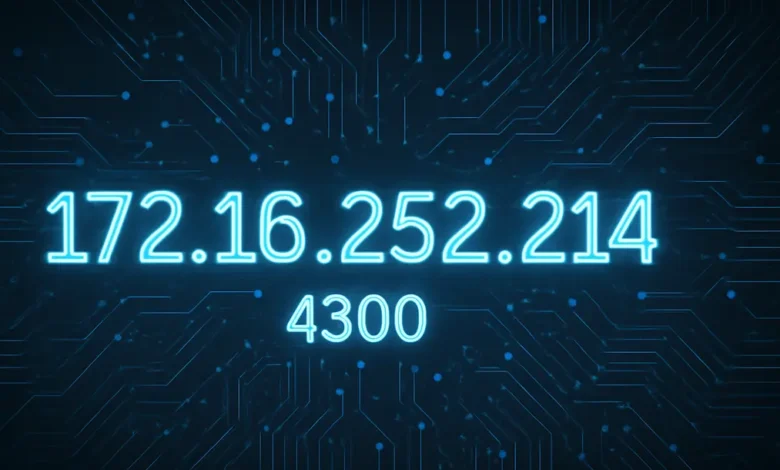In the ever-expanding digital universe, where data is the new currency and security the paramount concern, a new class of identifiers is emerging from the depths of code and cryptography. Among these, the string dnoga1b2c3d4 stands out not merely as a random sequence, but as a symbol of a broader technological evolution. This alphanumeric cipher, seemingly inscrutable at first glance, represents the intricate and layered approach modern systems are taking towards security, identification, and data management. To understand dnoga1b2c3d4 is to pull back the curtain on the fundamental mechanisms that power our connected world, from blockchain ledgers to secure API handshakes and the very fabric of the Internet of Things (IoT).
The structure of dnoga1b2c3d4 is its first clue. It is not a word but a code, a deliberate construction. The lowercase “dnoga” prefix could be an acronym, a project name, or a unique system identifier. The sequential “1b2c3d4” suffix follows a clear, alternating pattern of numbers and letters. This is a common methodology in generating unique identifiers (UIDs), hash values, or asset tags. The primary purpose of such a string is to ensure absolute uniqueness and avoid collision within a database or network. In a system managing millions of entities, a simple incremental number is insufficient. A complex string like dnoga1b2c3d4 provides a vastly larger namespace, ensuring that every device, transaction, or data packet can be distinctly recognized and tracked. The inclusion of dnoga1b2c3d4 in a system log or a transaction record is a testament to a designed, scalable architecture.
The Role of DNoga1b2c3d4 in Cybersecurity
In the realm of cybersecurity, randomness and unpredictability are the bedrock of defense. Predictable patterns are the cracks through which malicious actors force their way in. A string like dnoga1b2c3d4 exemplifies the principle of using non-sequential, complex identifiers to secure access. It could function as a secure API key, a unique device token for two-factor authentication, or a session ID. When a user or a device authenticates itself using a token containing the dnoga1b2c3d4 identifier, the system can verify its legitimacy without exposing more sensitive credentials like passwords. The complexity of dnoga1b2c3d4 makes it resistant to brute-force attacks, where automated scripts try millions of common combinations. Each instance where a system validates the dnoga1b2c3d4 key is a silent, efficient victory for proactive security design.
Furthermore, dnoga1b2c3d4 could represent a fragment of a larger cryptographic hash. Hash functions are algorithms that take input data of any size and produce a fixed-size string of characters, which is a digital fingerprint of the input. If even a single character in the original data is changed, the resulting hash will be completely different. A string like dnoga1b2c3d4 might be part of the output of a hash function like SHA-256, used to verify the integrity of data. In software distribution, for example, a file might be distributed alongside its hash. A user can compute the hash of the downloaded file; if it does not match the expected value, which might contain a segment like dnoga1b2c3d4, it indicates the file has been corrupted or tampered with. Thus, the integrity of the entire digital asset is pinned to the unforgiving specificity of its hash.
DNoga1b2c3d4 and the Internet of Things (IoT)
The Internet of Things presents a monumental challenge in identification. Imagine a smart city with millions of sensors—tracking traffic, air quality, energy usage—all communicating simultaneously. Each of these endpoints requires a unique address. This is where identifiers like dnoga1b2c3d4 become indispensable. It could be the unique serial number hardcoded into a sensor’s firmware. The “dnoga” prefix might identify the manufacturer or the device type (e.g., a “digital nitrogen oxide gas analyzer”), while the “1b2c3d4” suffix uniquely identifies that specific unit among thousands. When this sensor sends a packet of data to a central server, it includes its dnoga1b2c3d4 identifier. The server instantly knows which sensor the data is from, its location, and its calibration profile. This seamless, automated identification is what allows IoT ecosystems to function at scale, making the humble string dnoga1b2c3d4 a critical cog in the machine of a smart world.
Blockchain and Digital Asset Management
The blockchain revolution is built on the back of unique, verifiable identifiers. Every transaction, every block, and every smart contract on a distributed ledger must be cryptographically sealed and distinct. A string like dnoga1b2c3d4 is perfectly at home in this environment. It could represent the public address of a digital wallet, a unique token representing a real-world asset (like a piece of real estate or a digital artwork), or a transaction ID. The key characteristic of dnoga1b2c3d4 in this context is its non-fungibility. In the world of Non-Fungible Tokens (NFTs), for instance, each token is unique and non-interchangeable. An NFT for a digital painting might have a token ID that incorporates the dnoga1b2c3d4 string, permanently linking that unique identifier to that specific piece of art on the blockchain. This creates an unforgeable certificate of ownership and provenance, all anchored to a string like dnoga1b2c3d4.
The Human Factor: Memorability vs. Security
A natural question arises when confronted with a string like dnoga1b2c3d4: why not use something more memorable? This tension lies at the heart of modern digital design. Human-memorable names are prone to duplication, are often predictable, and offer a much smaller namespace. The very obscurity of dnoga1b2c3d4 is its strength. It is not meant for human recall; it is meant for machine precision. Our role as users is not to remember these strings but to interact with systems that manage them seamlessly through user-friendly interfaces. We see a device name like “Office Printer,” but the network operating in the background uses its dnoga1b2c3d4-style MAC address or serial number to ensure our document is sent to the right machine. This abstraction layer is crucial for usability, but it is built upon a foundation of complex, machine-readable identifiers.
The Future Trajectory of Identifiers like DNoga1b2c3d4
As we move deeper into the era of quantum computing and increasingly sophisticated cyber threats, the complexity and role of identifiers like dnoga1b2c3d4 will only intensify. Quantum-resistant cryptographic algorithms will generate even longer and more complex strings. In the concept of the “metaverse” or decentralized web (Web3), our digital identities, assets, and interactions will all be governed by a tapestry of such unique, sovereign identifiers. The principles embodied by dnoga1b2c3d4—uniqueness, verifiability, and machine-readability—will become even more deeply embedded in the infrastructure of our digital lives.
In conclusion, dnoga1b2c3d4 is far more than a random assortment of characters. It is a microcosm of modern digital philosophy. It represents the silent, efficient language that machines use to secure our data, manage our devices, and authenticate our transactions. It is the unassuming key that locks our digital doors, the unique label that tracks a package across the globe, and the immutable record that proves ownership in a virtual world. By decoding the purpose and power behind a string like dnoga1b2c3d4, we gain a profound appreciation for the complex, invisible architecture that makes our contemporary, hyper-connected existence not only possible but also secure and efficient. The next time you see a similar string of code, remember that you are looking at a fundamental building block of the digital age.



